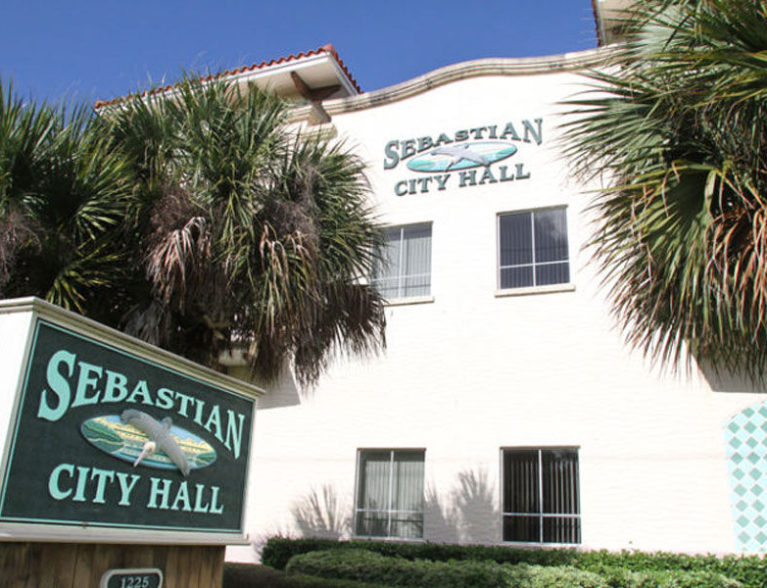
Continuing its pro-active approach to reducing septic tank use and protecting the Indian River Lagoon, Sebastian’s City Council will ask to “piggyback” onto Vero Beach’s hybrid septic/sewer program, and will approach the county about “kicking in” funds along with the city, to help residents pay for the conversion from septic tanks. Mayor Richard Gillmor made the suggestions at the Dec. 16 City Council meeting, and the Council, absent Andrea Coy, agreed to place the items on the next agenda.
The hybrid system, already under way in Vero Beach, starts with the basic Septic Tank Effluent Pump (STEP) system, through which a small electric pump sends effluent (liquid waste) via small-diameter pipes to a treatment plant instead of allowing it to soak into the ground water and eventually end up in the lagoon. The system is a hybrid in that it retains the septic tank drain field, enabling the system to continue to function during a power outage.
Gillmor explained the hybrid system is typically used in “built-out areas,” which already have septic tanks, because new developments will be built to current regulations, requiring no conversion. He told Council that the Indian River Lagoon Council’s new director, Duane DeFreese, will “probably have Vero Beach come up to talk with us about the STEP system.”
For three years, Gillmor continued, Sebastian has provided funds ($100,000 a year) for a grant program to help homeowners and businesses with septic tanks shoulder the cost of connecting to the city’s existing sewer lines. (About $20,000 for traditional septic tank conversion compared to about $7,000 for hooking up to the STEP system.)
Because the lines belong to the County’s utility, new hook-ups benefit the County, Gillmor pointed out. “We’re not the beneficiary, the County is, so we should ask the County to come up with its share,” to help residents pay for the conversion.
Both Gillmor and local businessman Damien Gilliams mentioned the county’s $40 million Utilities Reserve Fund, from which they asserted this funding could appropriately come.
Gilliams had requested and been awarded one of the City’s hook-up grants but, after doing the math, felt he couldn’t afford it, even with the City’s help. “Thanks but no thanks. I’m keeping my septic tank!” he told Council.
The Council also agreed to request that the County extend its North County sewer lines in the areas east of the railroad tracks, where the danger of pollution from sewage plume flow into the Lagoon is greatest.
Council member Jim Hill strongly supported Gillmor’s suggestions. “Yes, we should engage the county, ask them to extend the line. Anything we can do for the lagoon, I’m all for.”



